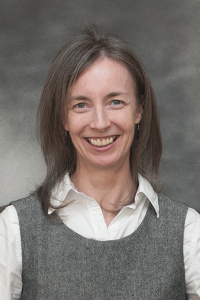非常抱歉,
你要访问的页面不存在,
非常抱歉,
你要访问的页面不存在,
非常抱歉,
你要访问的页面不存在,
验证码:

职称:Professor Robert and Debra Lee Faculty Fellowship
所属学校:Wake Forest University
所属院系:Chemistry Department,
所属专业:Chemistry, General
联系方式: (336) 758-4936
B.Sc. (Honours) 1988, Trent University (Peterborough, Canada) M.Sc. (Distinction) 1991, University of Guelph (Guelph, Canada) Ph.D. 1995, Queen’s University (Kingston, Canada) NSERC Postdoctoral Fellow 1995-97, University of Alberta (Edmonton, Canada) Assistant Professor 1997-2003, Wake Forest University Dunn-Riley Faculty Fellow 2002-03, Wake Forest University Associate Professor 2003-04, University of Ontario Institute of Technology (Oshawa, Canada) Associate Professor 2004-2010, Wake Forest University Department Chair 2006 – 2014, Wake Forest University Professor 2010 – present, Wake Forest University
Analytical methods capable of adaptation to a wide range of analytes are invaluable in an increasingly interdisciplinary scientific landscape. Such methods must be highly efficient and sensitive, especially towards analytes relevant to human and environmental health. Dr. Colyer’s research program addresses these challenges by developing new bioanalytical separation methods, with a particular emphasis on the utility of capillary electrophoresis with laser-induced fluorescence detection. The determination of analytes ranging in size from small drug molecules to intact microbes, along with investigations into the mechanism of noncovalent binding of suitable fluorescent probes including squarylium dyes and graphene quantum dots, are examples of current projects in the Colyer lab. More specifically, by coming to understand the nature of noncovalent interactions between various fluorescent probes and target analytes, it will be possible to develop efficient, high sensitivity analytical methods with applicability to the separation and quantitation of trace analytes in complex mixtures. To this end, appropriate buffer conditions are found to render visible and near-infrared dyes (especially squarylium dyes and boronic-acid based probes) non-fluorescent until bound to the analyte(s) of interest, at which point a significant enhancement in the fluorescence of the bound dye will allow for detection of the analyte(s). Our applied CE studies are accompanied by the investigation of some underlying physical phenomena that affect separation and on-column reaction performance, including the reaction kinetics of analyte-dye interactions, the stability of analyte-dye complexes, their stoichiometries and affinities, and their mobilities relative to those of unlabeled analytes. When coupled with transient electrophoretic separation methods, squarylium dye probes promise to afford much-needed advances in the areas of protein biomarker sensing and ligand selection against microbial targets. Additionally, new “bottom-up” synthetic routes for graphene quantum dot (GQD) production are being pursued, to allow for the manipulation of surface functionalization of these novel nanoparticles. Microscopic and spectral characterization of these low toxicity, biocompatible NPs will confirm their unique stability and fluorescence properties, allowing them to serve as focusing agents to enhance electrophoretic separations and as probes for a wide range of analytes. Graduate and undergraduate students in our research group are exposed to many aspects of chemical research. Projects in our group allow students to develop a wide variety of skills beyond separation method development. These skills include basic biochemical sample handling, derivatization chemistry, biomolecule conjugation, laser optics, spectrophotometric methods, electronics, data acquisition, software programming, and statistical analysis. Students are encouraged to present their research work at regional, national, and international conferences, and are given opportunities to collaborate with researchers at other institutions in the US and Japan.